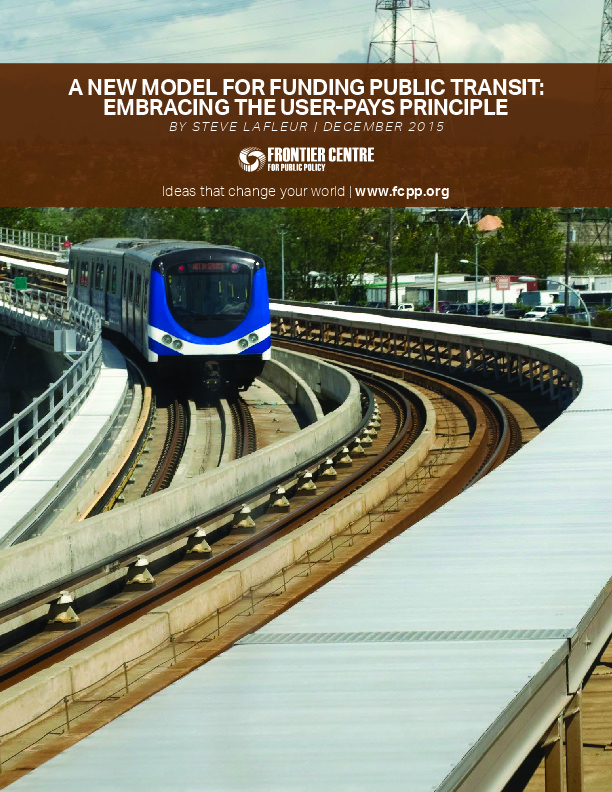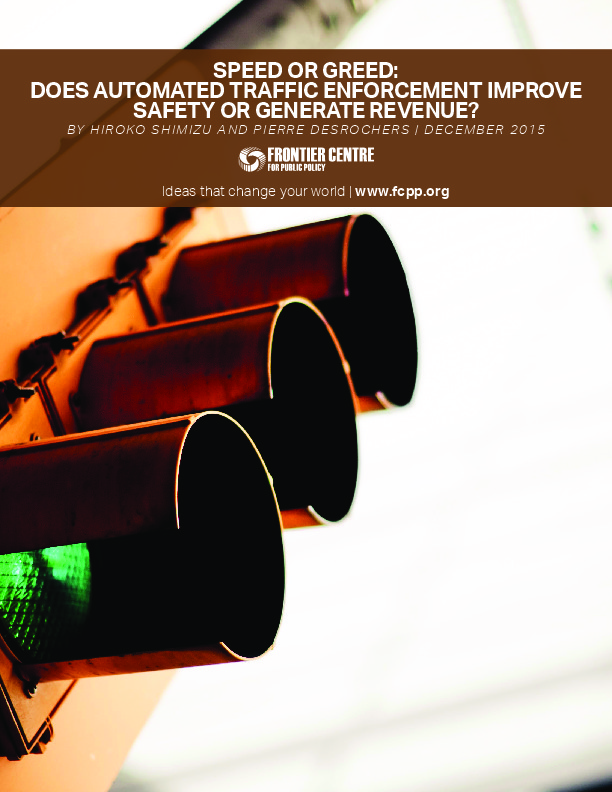“She's got a ticket to ride and she don't care,” says the old Beatles song. And when it comes to Uber, most riders would sing it. If consumer demand was the only issue, the ride-sharing service would probably be operating across Canada by now, just like it does in...
Transportation
As The Crow Flies – Transportation Policy in Saskatchewan and the Crow’s Nest Pass Agreement
The Frontier Centre for Public Policy today released a study by Mary-Jane Bennett, a Senior Fellow at the Frontier Centre for Public Policy. As the Crow Flies: Transportation Policy in Saskatchewan and the Crow’s Nest Pass Agreement studies the Crow rate, one of the...
A New Model for Funding Public Transit: Embracing the User-Pays Principle
Public transportation is an important contributor to urban mobility, particularly in Canada’s largest metropolitan areas. Despite the fact that most residents view public transportation as a necessity, there is a tendency to think of it as more of a social welfare...
Speed or Greed: Does Automated Traffic Enforcement Improve Safety or Generate Revenue
Better engineered cars along with the adoption of seat belts and other road safety measures and legislation have contributed to a 58% decline in road fatalities in Canada between 1970 and 2009. The fatality rate is now so low that almost twice as many Canadians die...
Featured News
Timeless Wisdom – The Politics of Successful Structural Reform
It’s a well-known pattern in public policy – profligate politicians damaging their economies with out-of-control spending, massive borrowing and higher taxes – inevitably leading to fiscal crisis, sharp declines in growth and ultimately rapidly falling currency value...
Canada’s National Hysteria in the 21st Century
Mass hysteria is the spontaneous manifestation of a particular behaviour by many people. There are numerous historical examples: Middle Age nuns at a convent in France spontaneously began to meow like cats; at another convent, nuns began biting one another. In...
Alberta Cannot Sustain a High Speed Train
Alberta’s Minister of Transportation announced the government is looking into building a high speed rail from Calgary to Edmonton. In order to be profitable, high speed rail must connect highly densely populated areas and transport huge numbers of people each day, and Alberta could not meet these criteria.
Media Release – Massive Cost Overrun for Calgary’s West LRT Line a Reminder that Rail is Rarely as Cheap as Advertised
Calgary’s West LRT line opened today. The project cost more than double the initial $700 million estimate. While the cost escalation is greater than occurs on average for urban rail projects, the reality is that the average North American urban rail project costs over 40 percent more than estimated, and garners 60 per cent less ridership than projected. Voters should be sceptical of rosy forecasts for light rail projects.
Think Tank Pushes Bus ‘Brokerage’
A new study by the Frontier Centre for Public Policy is urging Saskatchewan’s government to convert its subsidized bus company into a brokerage.
Media Release – A New Model For Inter-City Busing Could Restore Services and Lower Prices: Liberalizing the market could ensure rural service while lowering the price of inter-urban travel.
Inter-city bus service is vital to rural Canada, yet has diminished throughout the country over the last few decades. The old model of cross-subsidizing unprofitable rural routes with profitable urban routes has broken down. The study recommends full liberalization of provincial inter-city bus markets, and the introduction of a least-cost subsidy system for unprofitable, socially desirable routes.
Inter-City Busing: A New Regulatory Framework for Canada
Inter-city bus ridership has decreased in Canada over the last several decades. However, the thriving curbside bus industry in the US and in Southern Ontario demonstrates that there is significant growth potential for a liberalized inter-city bus industry. While urban service would increase under liberalization, rural service would likely continue to decrease. To maintain rural ridership, provinces should create a system of least-cost subsidies to ensure that companies are willing to serve otherwise unprofitable, but socially desirable routes.
Anti-oilsands rhetoric distorts accurate assessment of risk
Apparently Quebec's environment affairs has problems with plans to import crude from Alberta's oil sands to Montreal refineries. Daniel Breton, a former environmental activist, mentioned that there are "environmental risks with oil." He then made specific mention of a...
Winnipeg Public Transportation: Making the Perfect the Enemy of the Good
Public transportation used to be an afterthought in mid-sized North American cities. There now appears to be a consensus that public transportation is important for moving people around the core of relatively dense cities. Unfortunately, rather than focusing on practical improvement, many politicians and transit advocates are trying to rush too far in the other direction.
Alberta Fast Tracking Highway 63 Expansion
The Government of Alberta has announced that it will expedite plans to compete the twinning of Highway 63.
The Future for Transport to Canada’s North: Airships and Other Options
PowerPoint slides which accompanied Barry Prentice’s speech The Future for Transport to Canada’s North: Airships and Other Options that he gave in Winnipeg, October 9, 2012.



